Characteristics and brewing methods of Yunnan small Katim Coffee beans Flavor description Katim is Arabica variety
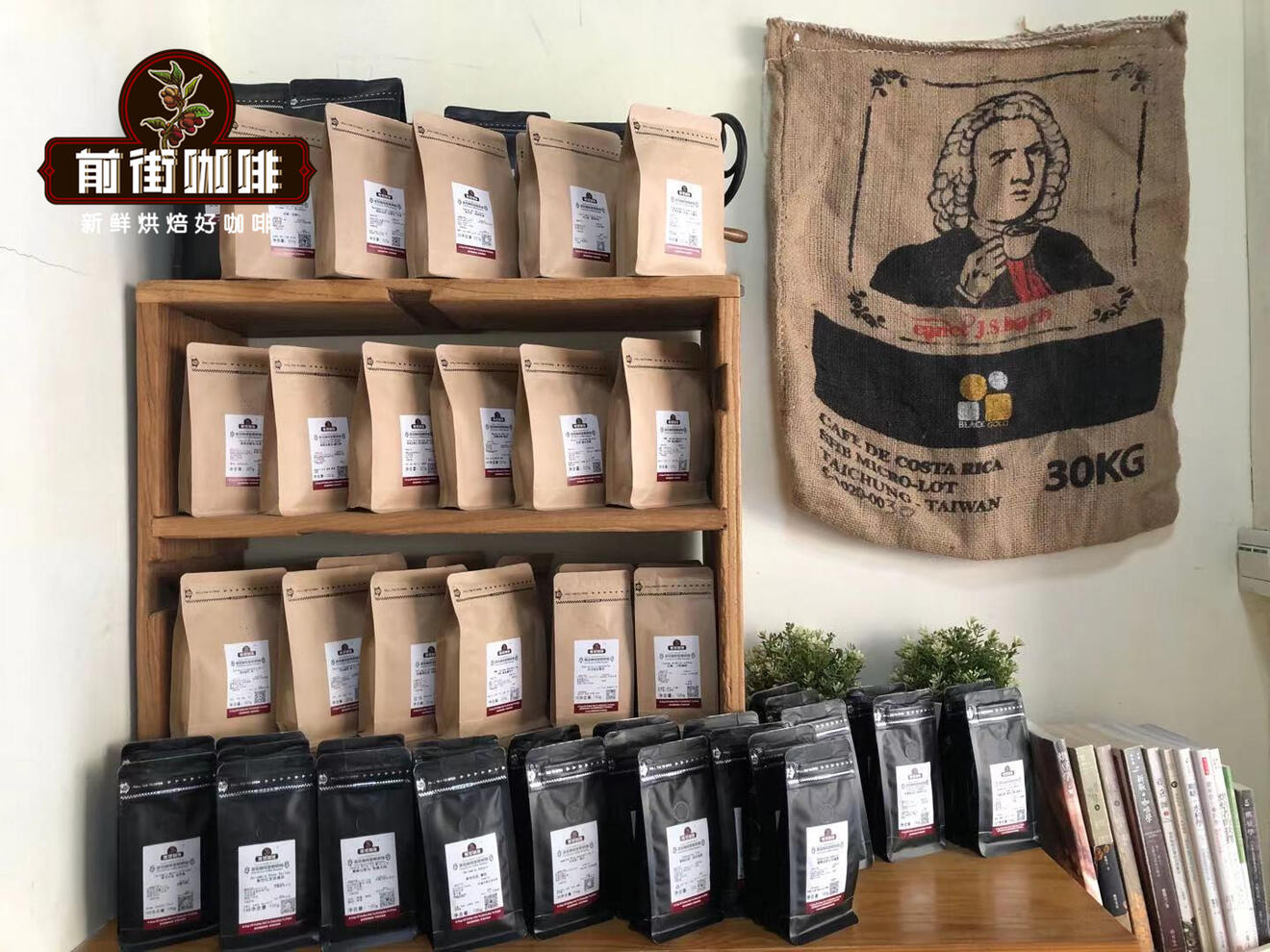
Professional coffee knowledge exchange more coffee bean information please follow the coffee workshop (Wechat official account cafe_style)
In fact, the oldest variety in Yunnan is the iron pickup, but the iron pickup is not resistant to disease. in order to simply increase the yield, coffee farmers began to cut down the improved varieties with good flavor and plant varieties with poor flavor, but with very high yield. s288, which is resistant to leaf rust, was introduced at the initial stage, and more high-yielding Katim coffee beans were introduced in the later stage. Now you will find two kinds of coffee beans in Qianjie coffee, one is Yunnan iron pickup coffee beans, the other is Katim coffee beans, while in Qianjie coffee, Yunnan iron pickup cards are marked as Yunnan boutique coffee, and Yunnan Katim coffee beans are marked as Yunnan small grains.
On the Indonesian island of Sumatra, Ateng (the local name of Katim coffee beans) and Tim Tim- is Timor (half of the Luodou gene) already account for 70% of exports. The so-called Manning is actually a three-in-one of these two kinds of hybrid beans and iron pickup (one of the Arabica species).

Colombia also grows a large number of its own Katim coffee beans (it is said that it has been backcrossed for many generations, and the gene of Luodou has been greatly reduced). It is named "Colombia" after the country, which shows the degree of importance and has become one of the major export varieties.
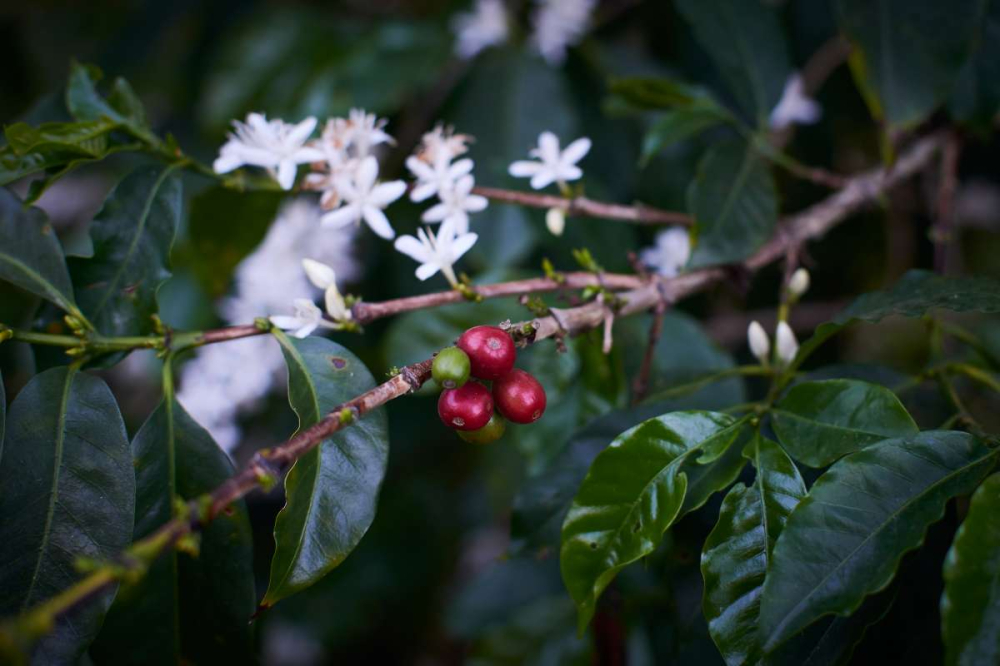
The local Roa hybrid in Kenya, called Ruiru 11, is also likely to replace the traditional variety SL28/34 in the export of commercial beans.
China's Yunnan, exports to Starbucks, Nestl é and other major international coffee manufacturers are basically Katim species, after all, high yield, disease resistance, high economic benefits to coffee farmers.
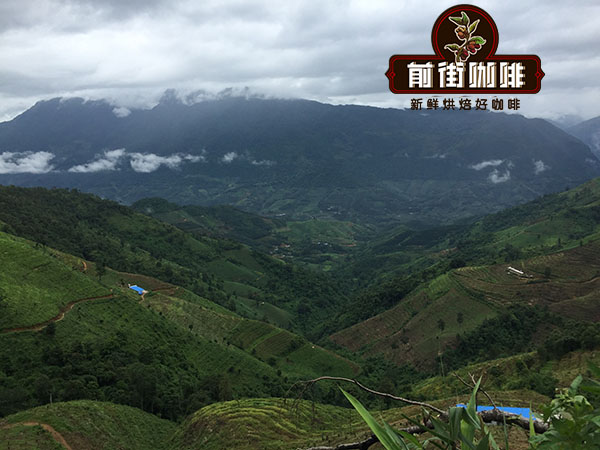
Catimor, a hybrid of timor and caturra, was developed in 1959 by the Portuguese Coffee Leaf Rust Research Center (CIFC). Its research direction is disease resistance and high yield. Katim coffee beans are characterized by high yield, short plants, dense planting and red-brown new leaves.
The robusta gene inherited from timor makes catimor more resistant to coffee berry disease, coffee leaf rust and insect pests, but it is often criticized for its performance in the cup. Katim coffee beans are characterized by fast ripening and high yield, requiring adequate fertilizer supply and shade. In addition, the high yield of catimor corresponds to a relatively shorter commercial life, with an average of only ten years.
When growing at low altitude, the cup test performance of Katim coffee beans has no obvious advantages and disadvantages compared with other commercial varieties. When planted above 1200 meters above sea level, the flavor of catimor cup is obviously inferior to that of bourbon, caturra and catuai. Katim coffee beans were first developed in 1959 and were popularized in Brazil in the 1970s and 1980s. With disease resistance and high yield, it occupies a place in Central and South American coffee varieties. The occasional outbreak of coffee leaf rust crisis in Central and South America has also contributed to the use of Katim coffee beans.

When it comes to Asian coffee, the first impression of coffee lovers is often calm and calm. It is precisely because of the heavy nature of Asian coffee that it is very suitable to be used as a base when making Italian coffee. The raw coffee beans in Asia are generally processed by wet or semi-wet process. most of the raw beans are uniform, but the color of the beans treated by semi-wet method is darker. Asian coffee is generally characterized by thick flavor, strong sweetness and round taste, but slightly flat aroma and brightness. Asian coffee: characteristics of taste, deep flavor and strong taste.
Coffee producing areas in China are mainly in Hainan, Yunnan, Guangdong and Taiwan. Northern Hainan Island, southern Yunnan Province, located between 15 degrees north latitude and the Tropic of Cancer, its coffee is strong but not bitter, fragrant but not strong, very unique. And with a little fruit flavor, it is the top grade of coffee, which is highly praised internationally. Taiwan is located in the subtropics, the territory is mountainous, and there is an obvious rainy season. As far as coffee is concerned, it is a good growing environment for coffee. Since the British introduced coffee trees during Guang Xu's time, they are still planted on a small scale. The more famous producing areas are Huilin Farm (more than 1,000m above sea level) in Nantou Mountain area and Hebao Mountain (294m above sea level) in Yunlin Gukeng. Coffee flavor is similar to Central and South American beans, has a soft sour taste and good texture, mild taste.
Yunnan is the main coffee bean producing area in China. Yunnan is located in the subtropical mountain climate zone south of the Tropic of Cancer, with unique plateau red soil, fertile and loose soil and mild climate, which is especially suitable for growing small-grain coffee. Yunnan coffee was first introduced by French missionaries in 1902. Up to now, there are still 24 coffee trees with more than 90 years old in Zhukula Township, Binchuan County. In 1914, the border people of the Ruili Jingpo nationality were introduced from Burma to Nongxian Village. Tibika and Bobang, two classic high-quality coffee varieties, are the main cultivated varieties of coffee in Yunnan. Because the morphology and habits of the two varieties are similar, the two varieties are mostly mixed. Bobang terminal bud tender leaves are green, called green top coffee; Tiebika top leaves are red copper, called red top coffee.
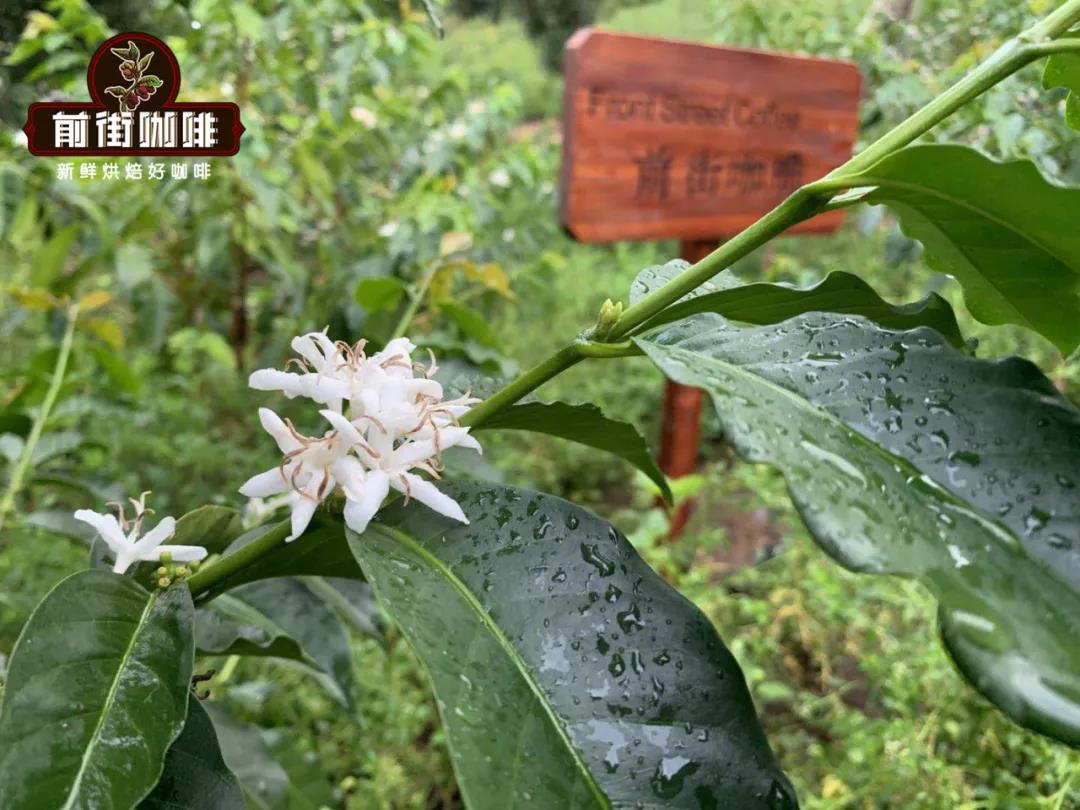
After inspecting the coffee planting and primary processing base in Yunnan, international coffee organization tasting experts rated Yunnan coffee as the kind of small seed coffee processed by Colombian wet processing, which is the highest quality coffee in the world. At present, Yunnan coffee is mainly distributed in 11 prefectures and cities, such as Baoshan, Simao, Yuxi and Dehong. Among them, the quality of coffee in Baoshan and Simao area is the best.
Lujiangba in the dry and hot valley is the "tropical treasure house" of Baoshan. The average temperature in the dam is 21.5℃, the highest is 40.4 ℃, and there is almost no frost all the year round. The small grains of coffee cultivated here are strong but not bitter, fragrant but not strong, small and well-proportioned, mellow and fruity. Simao, located in the upper reaches of the Lancang River, is famous for its steep terrain and is one of the famous producing areas of Pu'er tea in China. At the same time, Simao is also the area with the largest coffee planting area in China. The planting area of coffee is about 150000 mu, and the output can reach 22500 tons. Simao area is between 1000 and 2000 meters above sea level, with mountains and slopes as the main topography, with many dry and hot river valleys and barren mountains, fertile soil, sufficient sunshine, rich rainfall and large temperature difference between day and night, which is very suitable for coffee growth.
Due to the unique geographical environment and climatic conditions, Yunnan coffee has formed a unique flavor of strong but not bitter, fragrant but not strong, with a little fruit flavor. The quality of coffee depends on many factors, such as growing environment, climate, cultivation and management techniques and so on. Its best growing environment is low latitude, high altitude, sufficient rainfall and suitable sunshine, but other areas in this zone, such as Hawaii and Saudi Arabia in the United States, or low altitude or little rain in the desert. Only Simao in Yunnan Province has all kinds of suitable conditions, so it creates the mellow flavor of Simao coffee.
[Yunnan small Coffee]
Producing area: Baoshan, Yunnan
Altitude: 1200m
Treatment method: washing
Variety: Katim
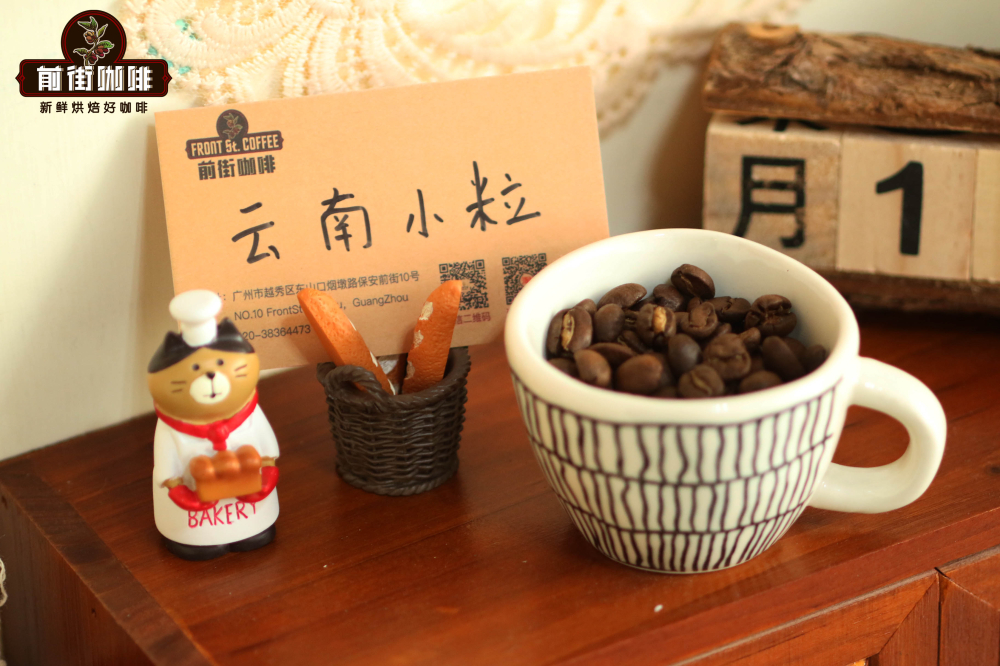
-Front Street Coffee Baking Show-
The furnace temperature is 190 ℃, the firepower is 120, and the throttle is set at 3; the temperature recovery point is 1 ", and the throttle is opened to 4 at 145℃, and the firepower remains unchanged; when the furnace temperature is 166℃, the bean watch turns yellow, the grass smell disappears completely, and enters the dehydration stage. When the furnace temperature reaches 188℃, the firepower is adjusted to 60 ℃, and the throttle is 5.
The smell of toast obviously changes to the smell of coffee, which can be defined as a prelude to an explosion. At this time, it is necessary to listen clearly to the sound of the explosion point. When the sound of the explosion point begins to explode, the throttle will remain unchanged. After an explosion, the development will take place for 3 minutes, and 198 ℃ will be put into the pot.
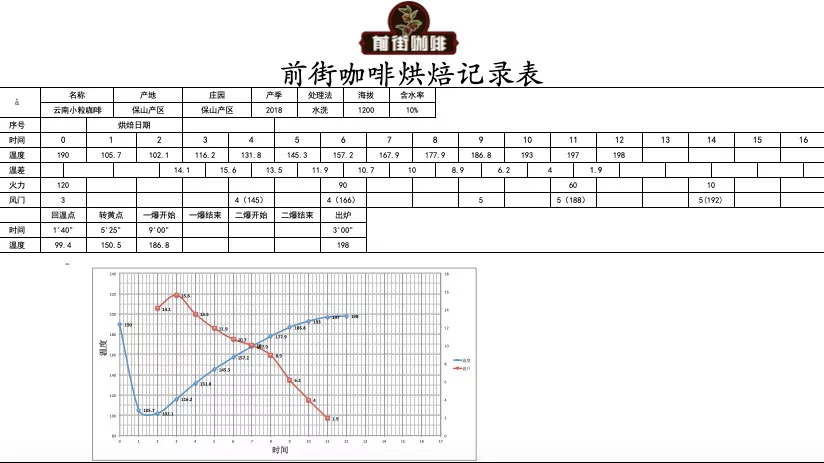
-test results of coffee cups in front street-
The entrance is supple, the aroma of Asian herbs is lively and bright, the cheeks are lively and bright, the cheeks are sour, mellow and balanced, the layers are rich, and the flavors of dark chocolate, honey and sucrose are obvious. After complete cooling, brown sugar flavor.
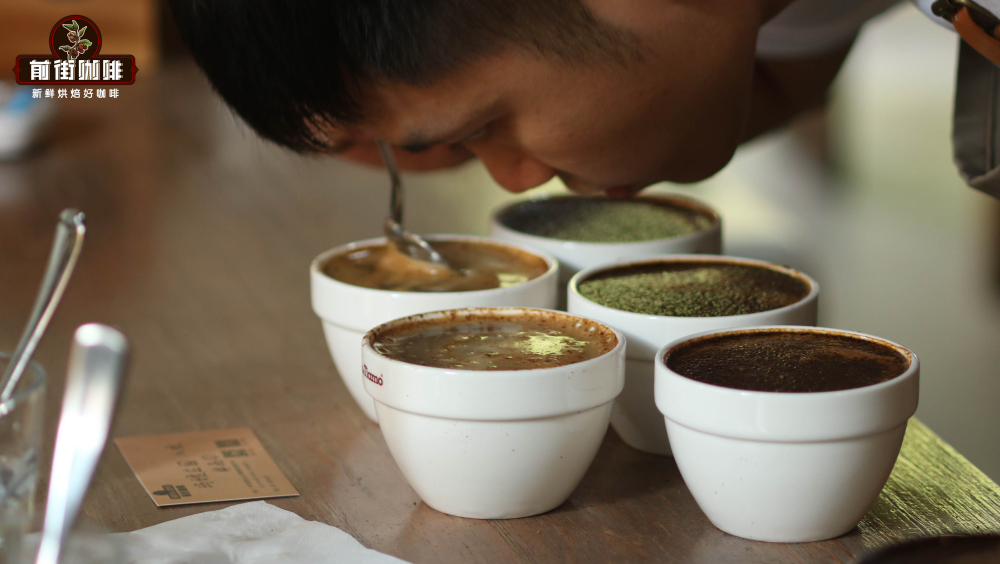
-Qianjie cooking suggestion-
[kalita trapezoidal filter cup]
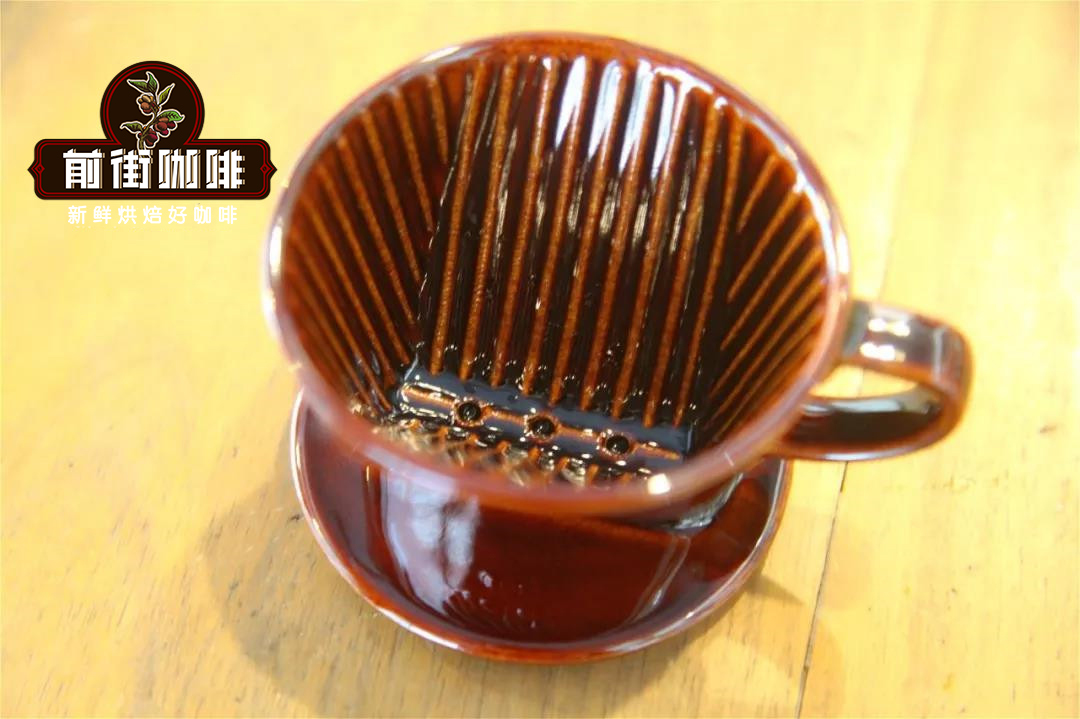
First use the kalita trapezoidal filter cup to flush the beans. There are three small holes under the trapezoidal filter cup. There are many ribs on the cup wall, which are evenly spaced and distributed in a straight line. The flow rate is relatively slow, mainly immersion extraction.
Parameters & manipulation: grinding degree BG 5R (passing rate of standard sieve No. 20 is 80%), water temperature 91 ℃, powder / water ratio 1:15. Steam with 29 grams of water for 30 seconds, inject water to 130 grams in sections, continue to inject water to 229 grams when the water level is about to be exposed, and remove the filter cup when the water level is about to expose the powder bed. The steaming starts and the extraction time is 1:40.
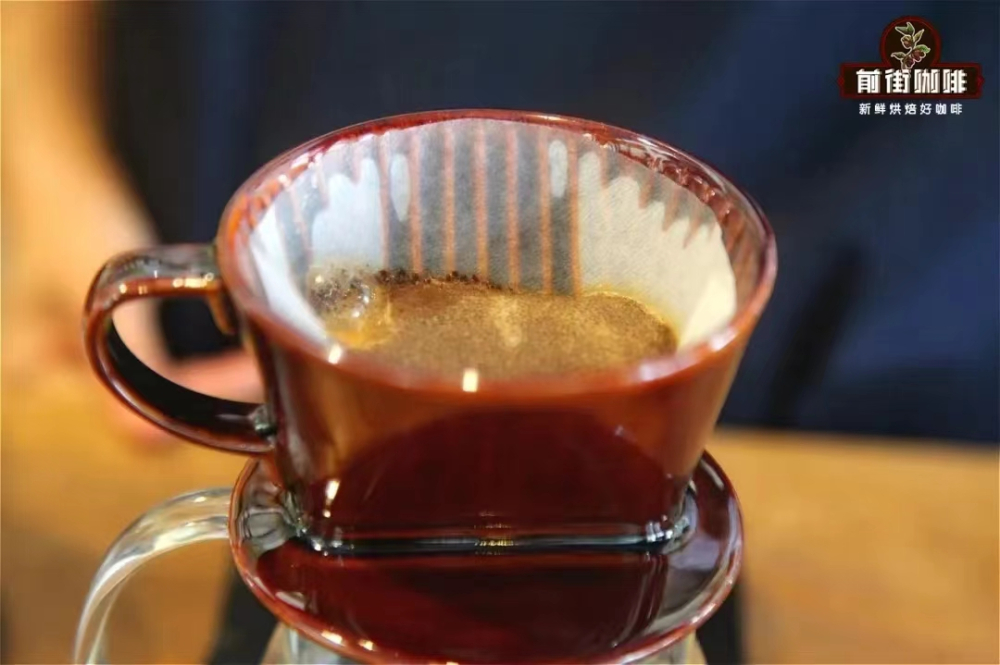
Flavor: it smells of spices, cantaloupe, cream, passion fruit, caramel, nuts and a sweet hazelnut finish.
[Hario V60]
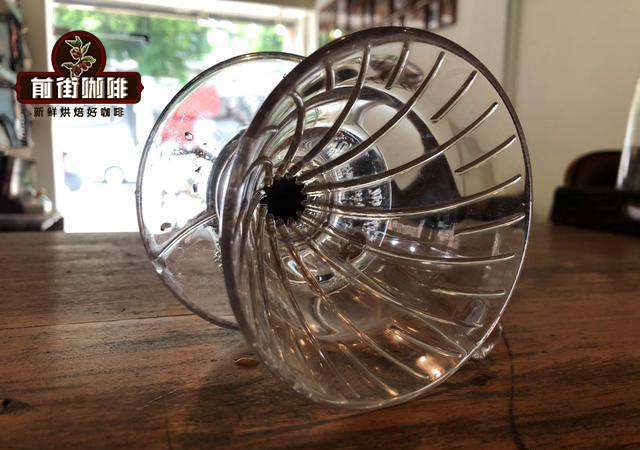
Because the ribs of the V60 filter cup are distributed in a curved shape from top to bottom, and the length is different, the exhaust is more smooth and the flow rate is faster when brewing, and it is precisely because of this that the flavor level of the extracted coffee will be more obvious. so the editor then uses V60 to make a pot of Yunnan small grains, and in brewing techniques, the editor will use segmented extraction to increase the extraction rate of beans.
Parameters & technique: fine grinding in the degree of grinding (the pass rate of standard sieve No. 20 is 80%), water temperature 91 ℃, powder / water ratio 1:15. Steam with 30 grams of water for 30 seconds, stop when injecting to 125g, continue to inject water to 227g when the water level is about to expose the powder bed, remove the filter cup when the water level is about to expose the powder bed, (steaming starts) the extraction time is 1:42.
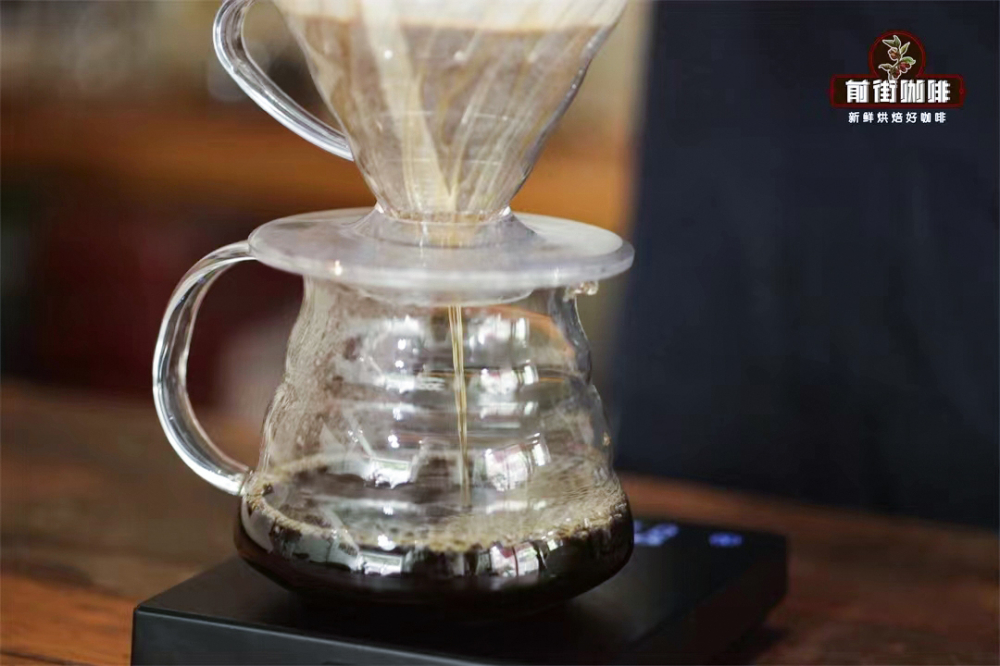
Flavor: carambola, plum, melon and fruit, cream, black tea, the overall taste is relatively smooth, there is a very bright fruit acid, the tail rhyme has a sense of tea, with a little fruit acid.
[siphon pot]
The principle of coffee extraction in a siphon pot is mainly realized through the pressure difference. First, the lower cup of water is heated to boiling, and then inserted into the upper pot to make the lower pot show a state of high pressure. due to the pressure difference between the lower pot and the upper pot, the hot water is mixed with the upper pot coffee powder and extracted, and the fire source of the lower pot is removed at the end of the extraction process, so that the pressure difference between the lower pot and the upper pot is instantly reduced, prompting the coffee extract to flow back to the lower pot. The siphon pot is mainly soaked, so the coffee brewed will be more balanced and mellow.
Parameters & technique: 20g powder / 1 10 / rough grinding (the pass rate of Chinese standard No. 20 screen is 60%) put 210g water in the lower pot, plug the upper pot tightly when the water temperature is 90 ℃, pour in the coffee powder when the water temperature reaches 90 ℃, stir so that the coffee powder is in full contact with the water, stir again after 30 seconds to destroy the powder shell, remove the fire source in one minute, wipe the lower pot with a dry cloth to speed up the reflux of coffee liquid.
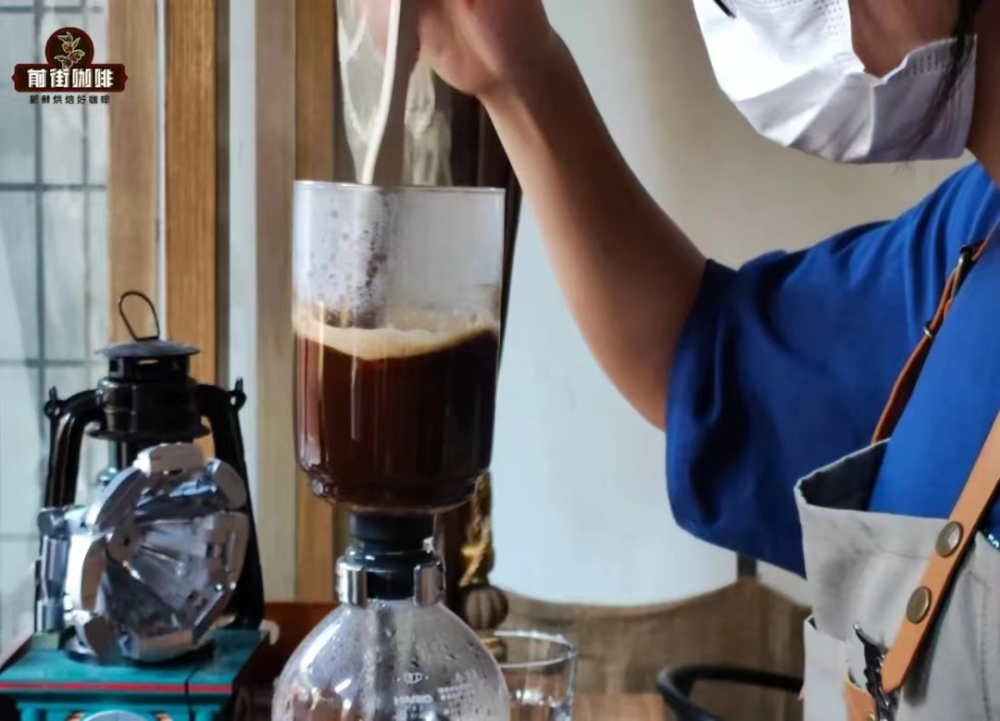
Flavor: melons, cucumbers, cream, citrus, chocolate, almonds, sweet oranges, sweet oranges, sweet oranges
| | Summary |
After comparing the flavor of different utensils, Qianjie coffee feels that although the beans are the same, the flavor brewed with different utensils is still very different! When brewing, if you want to get a cup of coffee with rich flavor, you can choose to brew it with fast-flowing filter cups such as V60 and hollowed-out filter cups, while if you want to get a cup of coffee with a mellow taste, you can choose soaking utensils such as siphon pots and ladder filter cups.
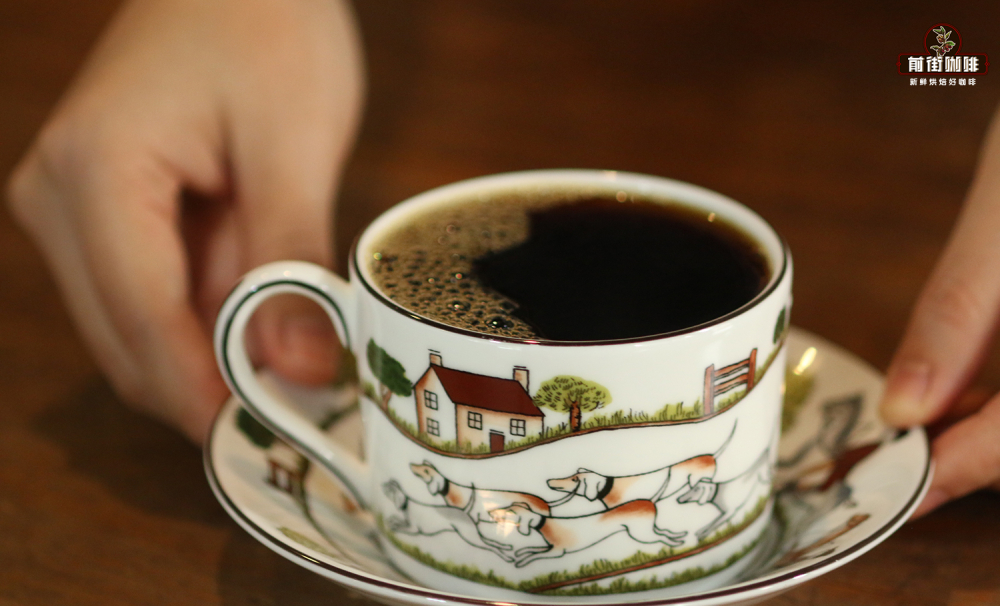
For more boutique coffee beans, please add private Qianjie coffee on Wechat. WeChat account: kaixinguoguo0925
Important Notice :
前街咖啡 FrontStreet Coffee has moved to new addredd:
FrontStreet Coffee Address: 315,Donghua East Road,GuangZhou
Tel:020 38364473
- Prev

Introduction to the producing area of Brazilian yellow bourbon coffee bean flavor description and grinding scale varieties
Brazilian yellow bourbon coffee bean flavor description grinding scale variety introduction grinding: in order to blend with water, coffee made the greatest sacrifice to pieces. Before brewing coffee, the beans must be ground into fine grains to increase the contact area between water and coffee in order to extract the delicacy. In fact, the bean grinder is more important than the coffee machine. At present, most people choose the serrated mill.
- Next

Description of the flavor of Java coffee beans with exquisite taste introduction of grinding scale variety manor
Sour [Sour]: a sense of taste in which the sensory area is mainly located at the back of the tongue and is characteristic of light roasted coffee. Spice [Spicy]: a flavor or smell reminiscent of a particular spice. Strong [Strong]: technically, it describes the advantages and disadvantages of various tastes, or the relative ratio of coffee to water in a particular conditioned product. It's popular.
Related
- Detailed explanation of Jadeite planting Land in Panamanian Jadeite Manor introduction to the grading system of Jadeite competitive bidding, Red bid, Green bid and Rose Summer
- Story of Coffee planting in Brenka region of Costa Rica Stonehenge Manor anaerobic heavy honey treatment of flavor mouth
- What's on the barrel of Blue Mountain Coffee beans?
- Can American coffee also pull flowers? How to use hot American style to pull out a good-looking pattern?
- Can you make a cold extract with coffee beans? What is the right proportion for cold-extracted coffee formula?
- Indonesian PWN Gold Mandrine Coffee Origin Features Flavor How to Chong? Mandolin coffee is American.
- A brief introduction to the flavor characteristics of Brazilian yellow bourbon coffee beans
- What is the effect of different water quality on the flavor of cold-extracted coffee? What kind of water is best for brewing coffee?
- Why do you think of Rose Summer whenever you mention Panamanian coffee?
- Introduction to the characteristics of authentic blue mountain coffee bean producing areas? What is the CIB Coffee Authority in Jamaica?

